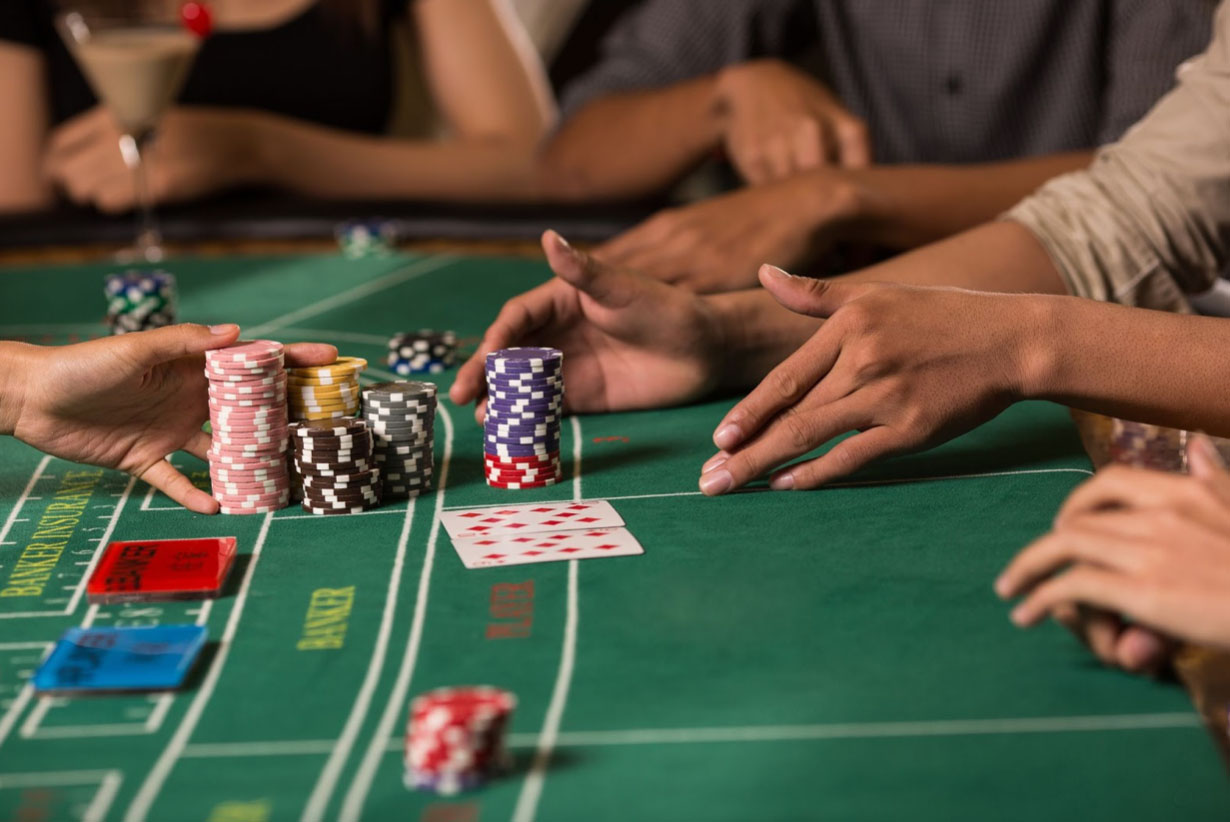
Anyone who is a fan of the earlier James Bond movies will know that the British spy has a fondness for the casino, and specifically for the game Baccarat. In Macau they also love Baccarat, that’s where most of the revenue comes from the game.
The popularity of the game is easily explained: its simplicity. You can’t do anything wrong in baccarat and the action is fast-paced. This makes it the ideal game for novice casino goers, but even players who visit more often will get plenty of adrenaline from dealing the cards.
We first explain the rules of the baccarat game, including Punto Banco which is the dutch version of baccarat, then briefly discuss optimal strategy to ensure you play it right at your favorite online casino. Finally, cover the history of the game and answer several frequently asked questions.
Baccarat Game Rules
Baccarat exists in several variants. The one played in the Netherlands is called Punto Banco but is sometimes also called simply Baccarat. Also in casinos in Las Vegas, the United Kingdom, Macau, and Australia you will encounter this version of the game. Other variants of the game, we’ll cover later.
In Punto Banco, all you have to do as a player is bet. The dealing of the cards, making all further decisions, and paying out are all done by the dealer. A decision to take another card or not, as in Blackjack, for example, is not an issue but is done automatically where necessary.
In baccarat, the one who gets closest to 9 wins. The value of the cards you add up but the cards have slightly different values than you are used to from many other games. The ace counts as one and the Jacks and Tens are worth 0 points. The cards with a value of 2 through 9 are worth their own value.
Value of cards in baccarat
The player and the banker are dealt two and sometimes three cards in baccarat. With that, you can easily go over 9 of course, but tens don’t count in baccarat. So if you have 10 or more after adding up your cards, another ten goes off.
Punto, Banco, or Equality
The first and only decision you have to make as a player is to bet on “punto,” “banco,” or “egalité. Since no information is known yet, this is a pure guess.
Although “punto” stands for player and is also called “player” in English casinos, and “banco” stands for banker, there is no further meaning in this. The dealer performs all the operations, and as a player you can also choose “banco” without any problem. You only gamble on who gets closer to 9.
If you bet on ‘egalité‘, you are betting that ‘punto’ and ‘banco’ will score exactly the same amount of points.
Two for Punto and two for Banco
Once the bets are made, the dealer will deal the first four cards. From a slipper (a large closed box usually containing six or eight decks of cards, called a “shoe” in English), the dealer first draws a card and places it in the “punto” (or player, or player) box and then one in the “banco” (or bank, or banker) box.
Then both squares on the table receive another card so that both ‘punto’ and ‘banco’ both have two open cards.
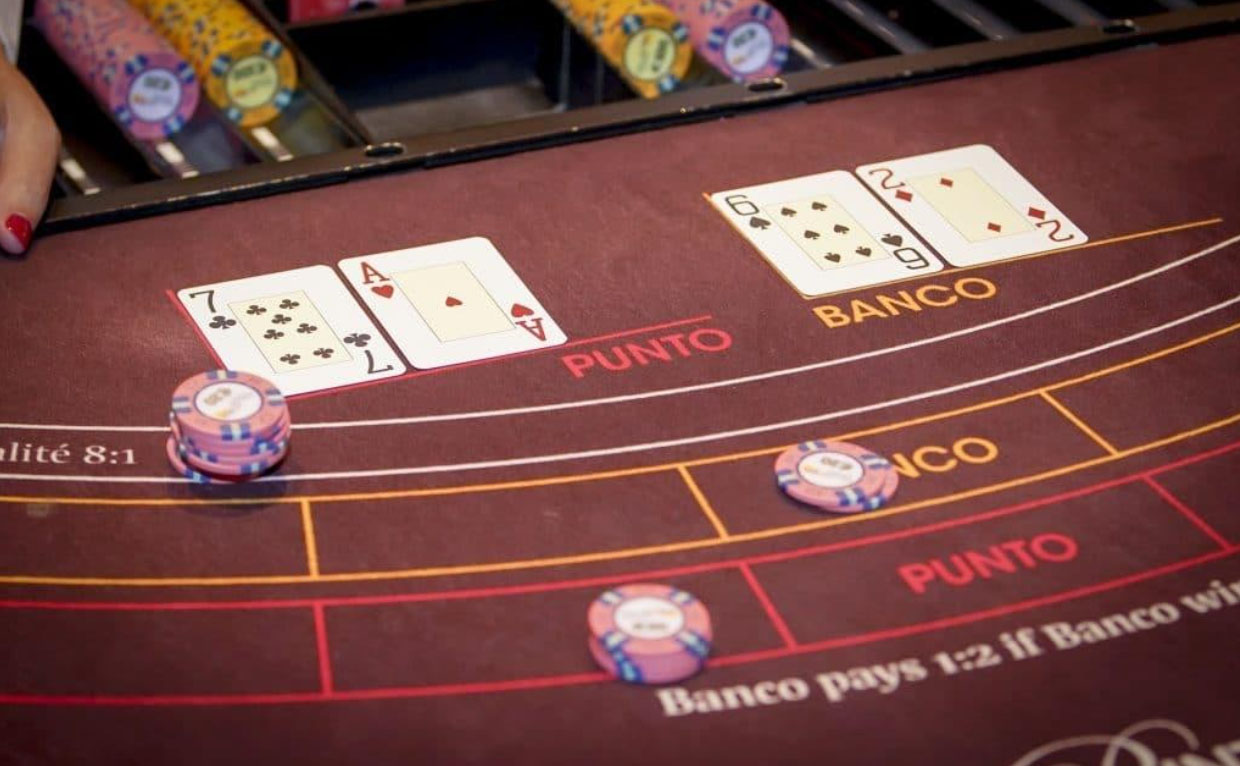
Right away eight or nine?
Usually, the dealer will immediately pronounce how many points ‘punto’ and ‘banco’ have. If you play Punto Banco at an online casino, the software will indicate how many points each person has.
If either the ‘punto’ or the ‘banco’ has eight or nine, then the game is over immediately. The one with the highest score (eight or nine) then wins immediately and the dealer will make the payout.
For example, if the player has eight and the bank has nine, the bank wins. If the player would have eight and the bank six, the player wins.
If the player and the bank both do not have eight or nine, the game continues. The player’s turn comes first. If he has 6 or 7, he does not get another card and the action goes to the bank. If the player has a total score of 0 to 5, he gets one more card.
Although the action is now with the bank, the first thing to look at is what the player has done. If the player has a 6 or a 7 (and therefore did not get a card) then the same rules apply to the bank. If the banker has a 6 or a 7 then he takes no card and if he has a score of 0 to 5 then he gets one more card.
Baccarat rules – act of the bank
If the player has received a third card, then special rules apply for the bank. The bank then first looks at its own score, and acts on it according to the following rules:
| Bank score | Act of the bank | Only if |
| 0, 1, 2 | Another card | |
| 3 | Another card | The player’s third card was not an 8 |
| 4 | Another card | The player’s third card was a 2, 3, 4, 5, 6, or 7 |
| 5 | Another card | The player’s third card was a 4, 5, 6, or 7 |
| 6 | Another card | The player’s third card was a 6 or 7 |
| 7 | No third card |
With all the action now behind us, it’s simple to see who wins. Whichever of the two – punto or banco – is closest to 9 wins. If all two have the same point total (no matter which cards or how many cards) then it is egalitarian; a tie.
The payout varies by the casino and can always be found on the provider’s website, or you can ask the dealer about it.
Baccarat house edge
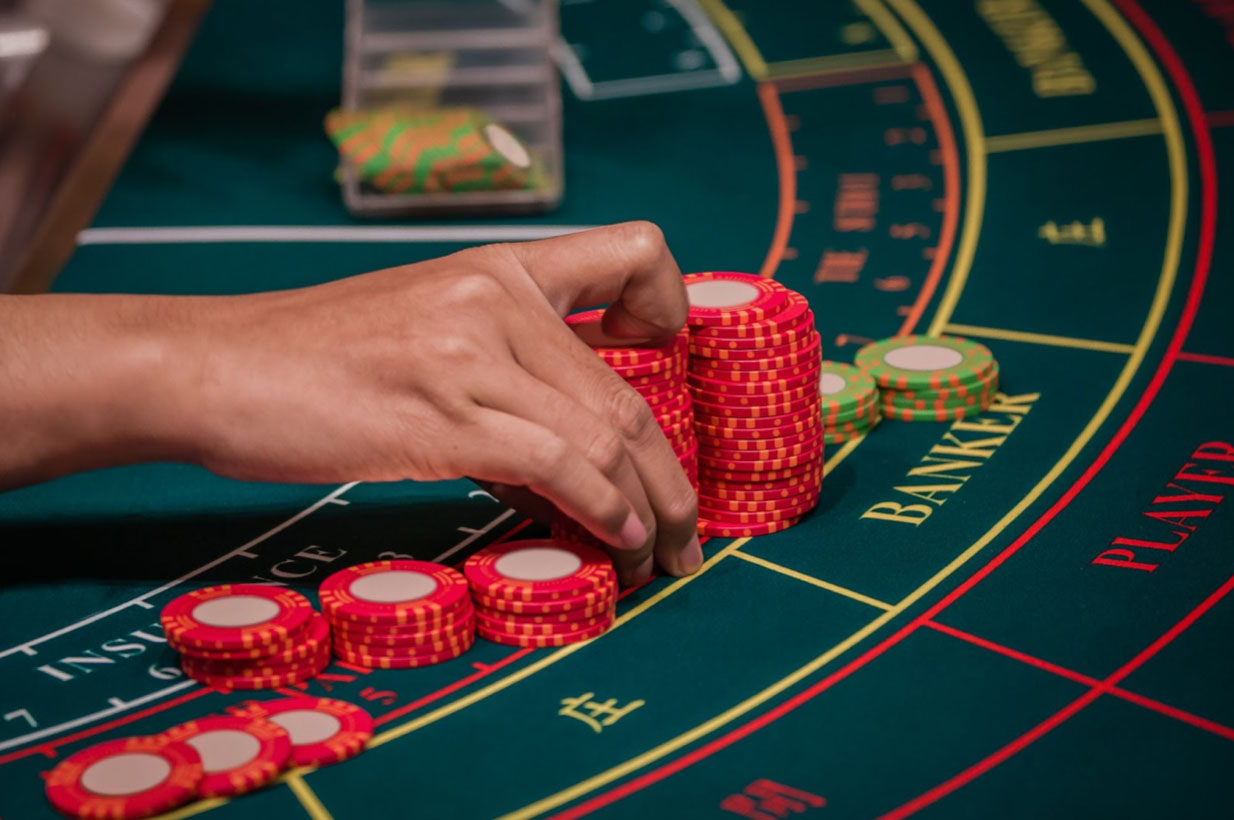
Because you have no influence on the course of the game, you cannot increase or decrease the house edge. After all, you can do nothing wrong with the game.
The house edge in Punto Banco depends on the different rules that the casino applies. In the variant where you pay five percent commission on successful bets on banco, then the following house advantages apply:
- If you bet on Banco, the house edge is 1.06%.
- If you bet on Punto, the house edge is 1.24%.
- If you bet on Egalité, then the house edge is 14.36% (if you get 8 times your bet)
If a casino applies different rules then the house advantage will be different. For example, if you receive 9 times your winnings when successfully betting on Equality, the house edge falls from 14.36% to 4.85%. And for Straight Punto Banco (also called No Commission Baccarat) the house edge depends very much on the point total on which you get paid only half.
The house edge on the egalitarian bet is often very high.
Baccarat Strategy
About a strategy for Baccarat we can be clear: always bet on Banco/Bank/Banker. Punto Banco is a pure gambling game, there is no dexterity factor in it. But if you bet on Banco you are the least far behind, even if they still take 5% of the winning bets. The rules of the game are such that Banco wins most often.
A bet on Egalité is the least strategic thing you can do. With this betting option, you are furthest behind.
The correct strategy in Punto Banco is therefore always to bet on Banco. The rest comes down to luck!
Many casinos offer various side-bets with sometimes high payout options. For example, you can bet on the number of points won, or the exact combination used to win. Especially pairs (for example, two fours for a score of 8) are popular side-bets. Whatever these side-bets are, the house edge is always significant and is therefore not recommended. This applies not only to Punto Banco/Baccarat but to virtually all side bets in traditional casino games.
The correct strategy in Punto Banco is therefore always to bet on Banco. The rest comes down to luck!
Baccarat and superstition
Anyone who has ever been to Macau knows that the gamblers there are superstitious. Baccarat players are allowed to turn up their cards and almost squeeze the cards to increase the tension. They also blow at the cards, sometimes before flipping them open but also afterward if they didn’t get what they wanted.
If the cards are really bad, some players crumple up the cards making them useless. Because the game is so popular and casinos like to see baccarat players, this is allowed in many casinos. However, the casinos then use special cardboard cards whose decks are only used once.
In some cases, wads of cards are thrown at the dealer by players expressing their displeasure. Although this is against the rules of all casinos, it is often turned a blind eye in the case of high rollers.
In casinos in Macau, it is common for players to walk from one Baccarat table to another looking for trends. Special displays next to the table showing who (punto or banco) won in each round. If players see the same player win several times in a row, they play along with that player on that table.
The phenomenon of superstition in Baccarat can also be seen in some Las Vegas casinos, and the crumpling and tearing of cards have also made its appearance in the gambling capital of the world.
Baccarat history
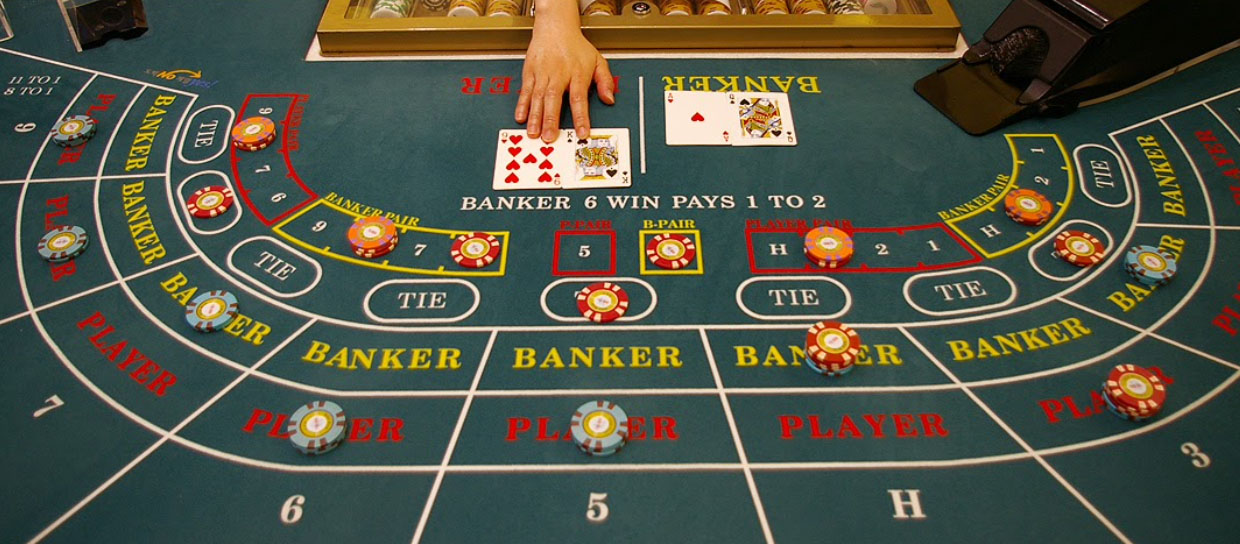
Baccarat has been played for centuries, although the game has gone through some transformations. Because games and gambling were not considered high arts, historiography is often limited. This is also true of baccarat, for which no written sources exist from before the 19th century.
The exact history of the game remains a mystery, although some historians have ventured into the subject. Some of them draw a parallel to Pai Gow, the Asian game originally played with special stones. The similarities between the two games are very limited, but the similarity is in the name. Pai Gow means “to make nine,” which is also the ultimate goal in baccarat.
Other historians see similarities with the nine-sided die that was said to have been used in ritual in ancient Rome. Roman priestesses, the so-called Vestal Virgins, depended on their fate on the nine-sided die. If they rolled an 8 or a 9 then they would become a high priestess. A 6 or a 7 meant they would be allowed to live but would lose their priesthood. Lower than a 6 meant they would be forced to walk into the sea to commit suicide, so the story goes.
Although there are similarities between Baccarat and the legend of the 9-sided die, the evidence that the two are related is paper-thin.
Using Tarot Cards, the Italian Felix Falguiere introduced a game similar to today’s Baccarat. Under the name Baccara the game was described where players aimed for a score of 9. Also, games like Macao and Le Her had a similar setup but it is unknown which game was introduced in which year.
Baccarat is known today primarily as a French game, although it is played all over the world and is especially popular in Asia. According to historiography, Baccarat (the French wording for the game then known as Baccara) was brought home by French soldiers when they returned from a conflict with Italy in the 1490s.
After the game was introduced to France, it quickly became popular at the French court. Even when gambling was banned in France, the popularity of Baccarat remained unprecedented. Since the game “Chemin de fer” is French for railroad (literally iron road), it can be assumed that this variant emerged after the introduction of the first French railroad in 1827. However, it is also possible that “Chemin de fer” is a name that the game received later after being known by another name before that.
In 1847, M. van-Tenac publishes the book “Album des Jeux” with an explanation and mathematical approach to various games. To Baccarat, 13 pages (pages 84 to 97) are devoted in the book and the calculation of probability is discussed in detail.
The crossing to America was soon made. The first time the game of Baccarat is mentioned in a source still available today is in 1871 in the New York Times. In the gossip article dated August 14 of that year, it is mentioned that visitors to the Club-House in Long Branch, New Jersey could play the games Faro, roulette, and Baccarat. If you search for the term Baccarat on nytimes.com and sort by oldest first, you will see that Baccarat is frequently written about in the years after 1871, although many articles are also about what is happening in Europe (especially France).
A handhold for historians is the book ‘The Official Rules of Card Games Up to Date’ by Edmond Hoyle, published in 1911. This reference work describes the variants ‘Baccarat en Banque’ and ‘Chemin de Fer’.
So although Baccarat had been played in America since at least 1871 and the rules were widely known since 1911, the game was not mentioned in the law that legalized gambling in the state of Nevada in 1931. In that law, nicknamed the “Wide Open Gambling Bill” roulette, keno, twenty-one, blackjack, and several other games are mentioned, but Baccarat remains unmentioned.
In 1958, the Sands (the hotel in Las Vegas where The Venetian stands today) introduced Baccarat to Las Vegas according to various sources. It was the ‘Chemin de for a variant that made its appearance. The popularity of the game did not really increase until Punto Banco was introduced a year later. Tommy Renzoni, who wrote a book about the game, claimed to have introduced the game in Las Vegas after he found it had been played in Argentina for some time.
Baccarat is hugely popular in Asia today. Most of the revenue in casinos in Macau is garnered from the game. Although card games have always been popular in Asia and there is evidence that a similar game was played in the East even before its popularity in Europe, it is likely that the game as played today has blown over from America and Europe. Casinos in Macau are full of Baccarat tables.
Baccarat Knew-Knows
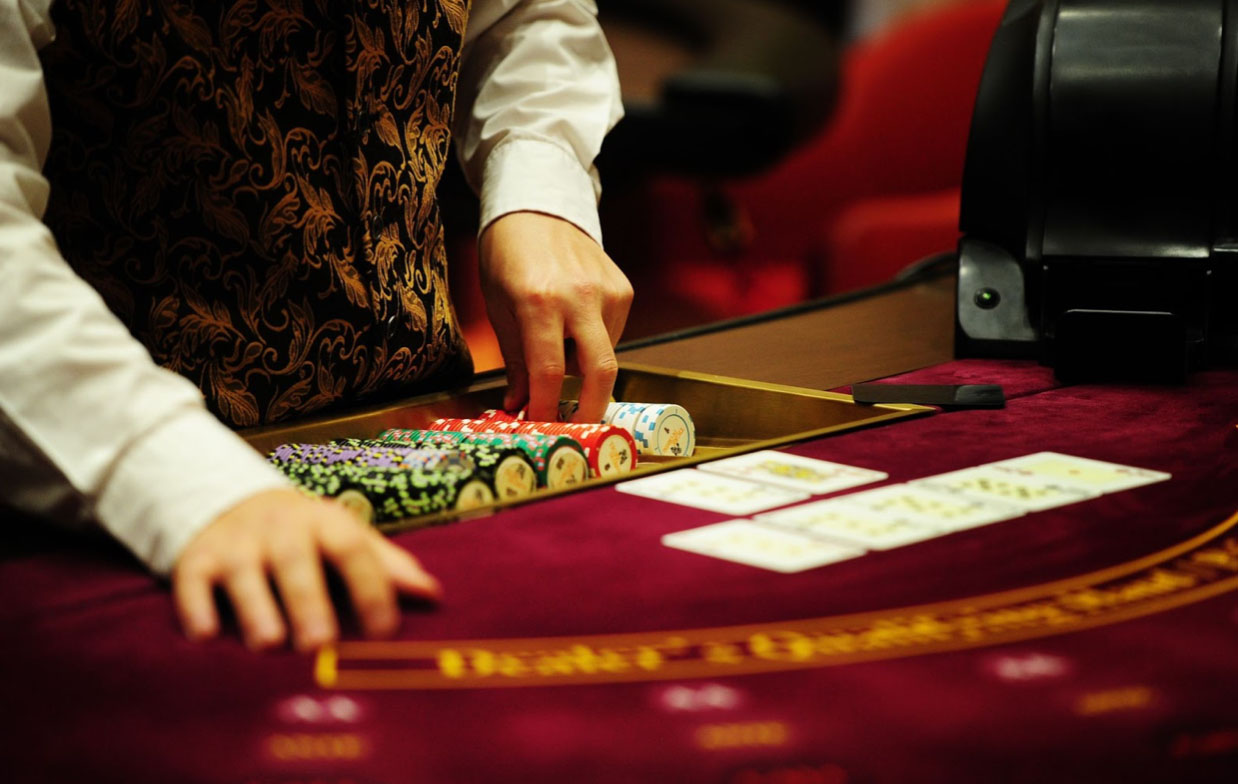
- Baccarat is an umbrella term for several games, including Punto Banco, Chemin de fer, and Baccarat Banque. Because the Punto Banco variant is so immensely popular, this game is also often called Baccarat for short.
- Straight Punto Banco is the most popular form of Punto Banco and therefore Baccarat. In Straight Punto Banco (also known as No Commission Punto Banco) you don’t have to pay commission on your winnings whereas with traditional Punto Banco you have to. But this does not mean that you are better off in this variant, the rules have been changed slightly so that the house still has an advantage.
- Punto Banco is one of the simplest games in the casino because you have no influence on the final outcome. You just have to bet on who you think will win punto or banco (or choose a tie). You can’t do anything wrong.
- Punto Banco is one of the games in the casino with the lowest house edge. Therefore, if you want to spend a long time with your money, this is a great game to play. If you choose Banco, the casino has an advantage of just over 1%.
- At Punto Banco choosing Banco is the best option? With a house edge of 1.06%, you’re the least far behind here. If you go for Tie or bet on one of the many side-bets, the house edge is many times greater.
- James Bond played Baccarat as early as the first movie? In the 1962 film Dr. No, Bond took on Sylvia Trench at the Chemin de fer table, a variant of Baccarat.
- Baccarat is known as a French game but probably originated in Italy? Historians don’t quite agree but as early as the 1,400s a game was played in Rome that bears similarities to the game we know today as Baccarat.
- Baccarat is the most popular game in casinos in Macau. More than XX% of the revenue of casinos in Macau comes from Baccarat tables.
- Players in Macau often crumple up the cards at Baccarat and that is allowed. The casinos use cardboard cards on purpose and throw away each deck after it has been used once.



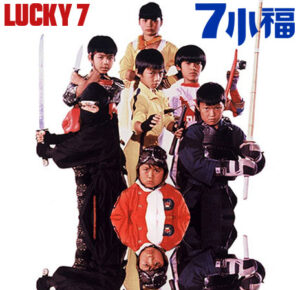

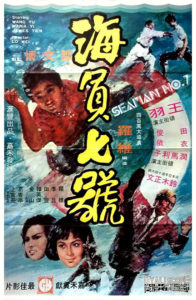

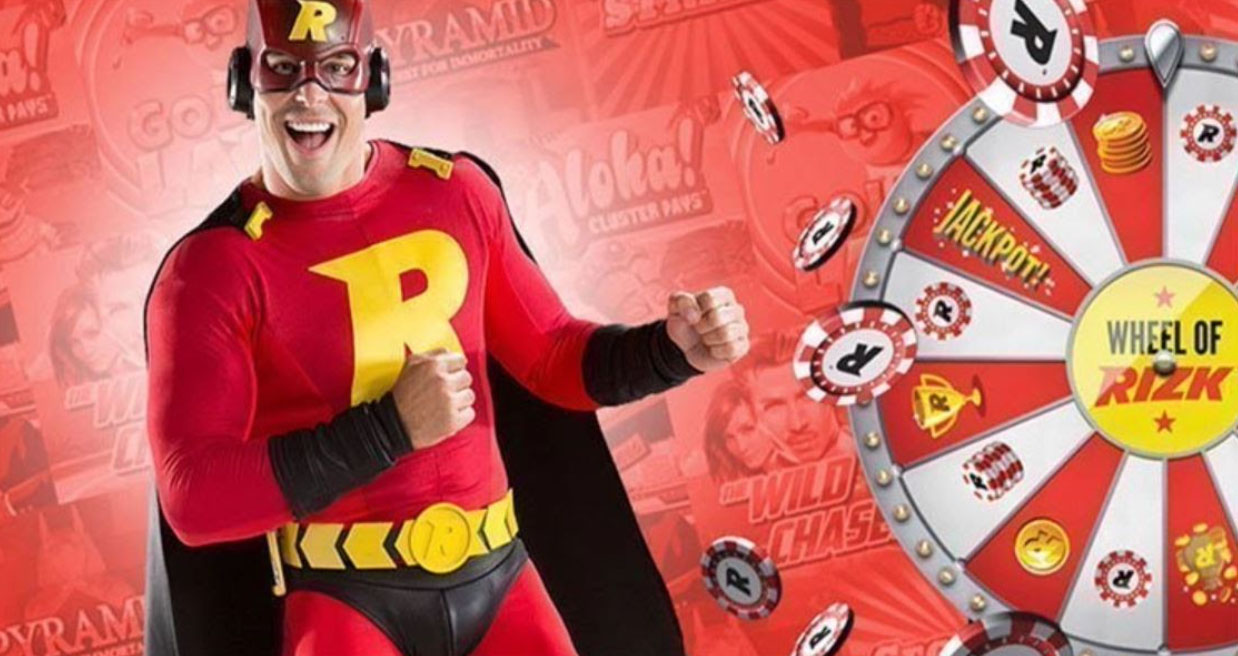


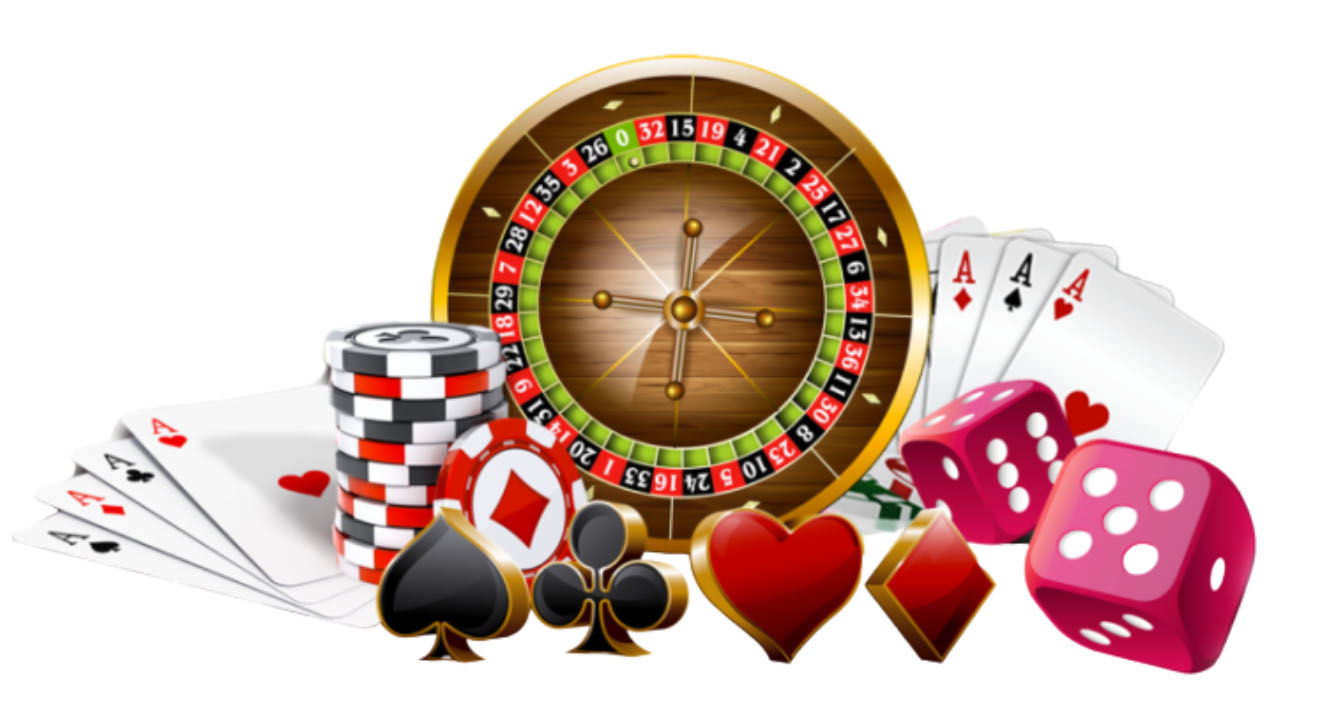









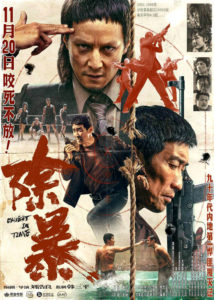



2 Comments